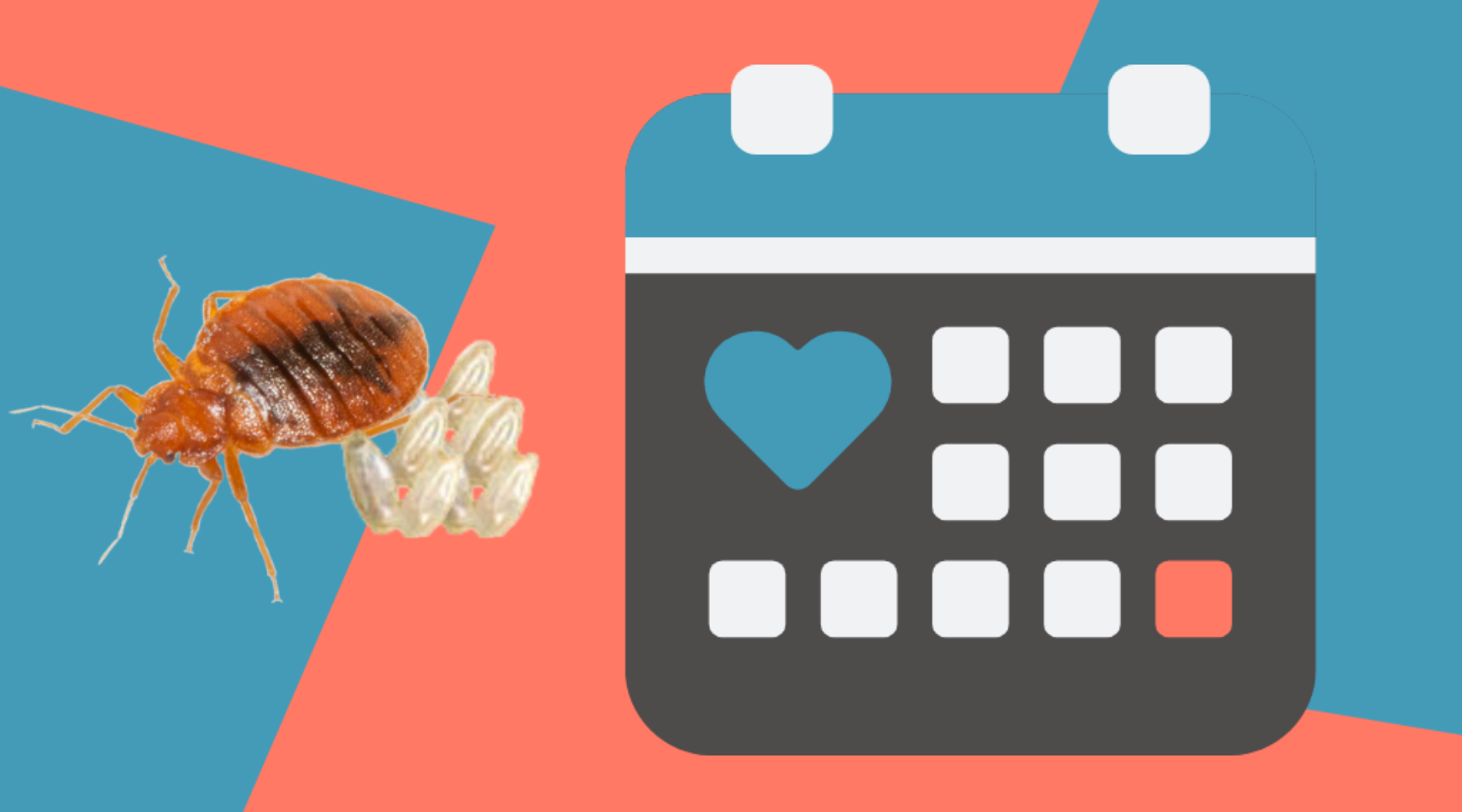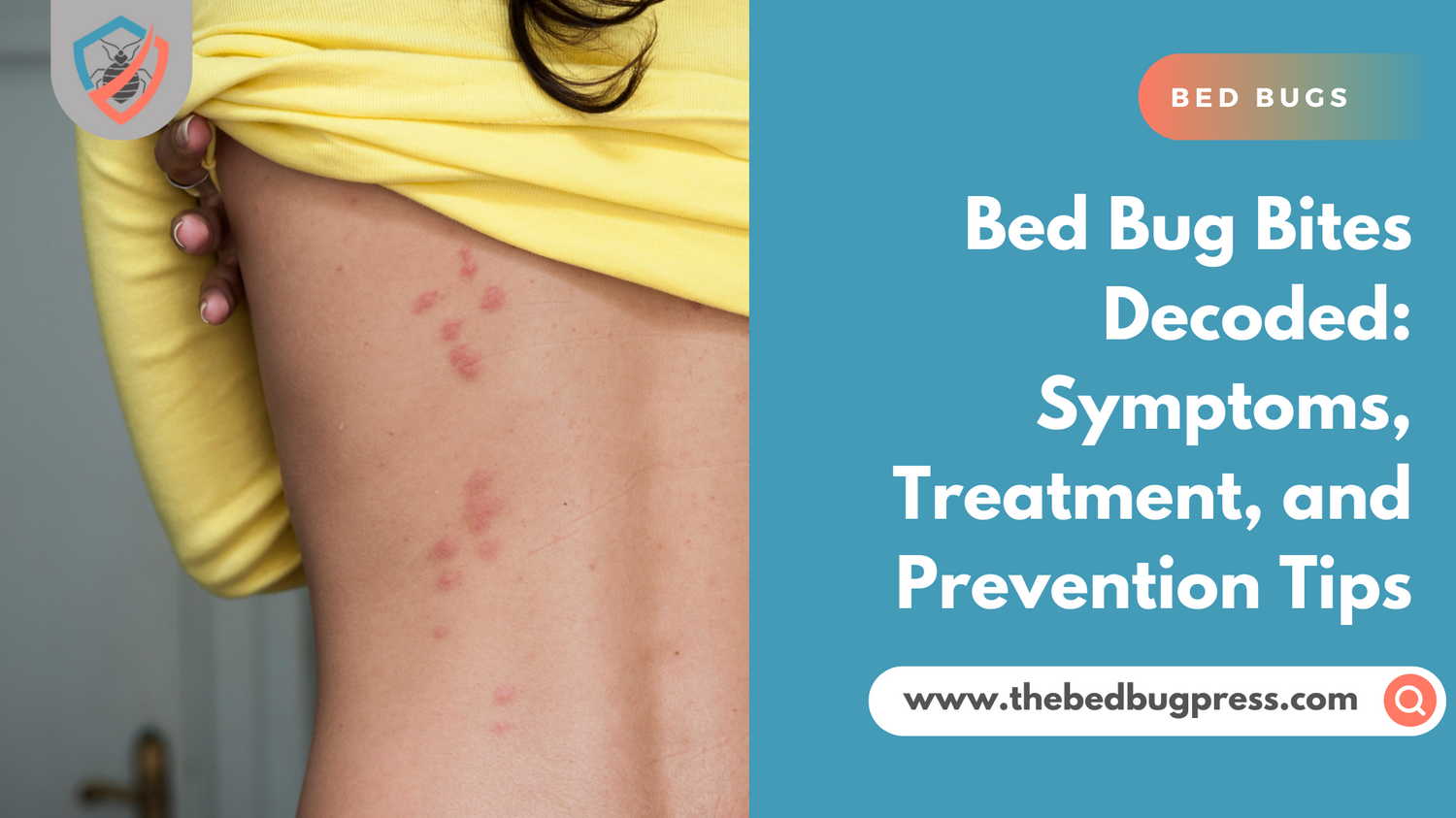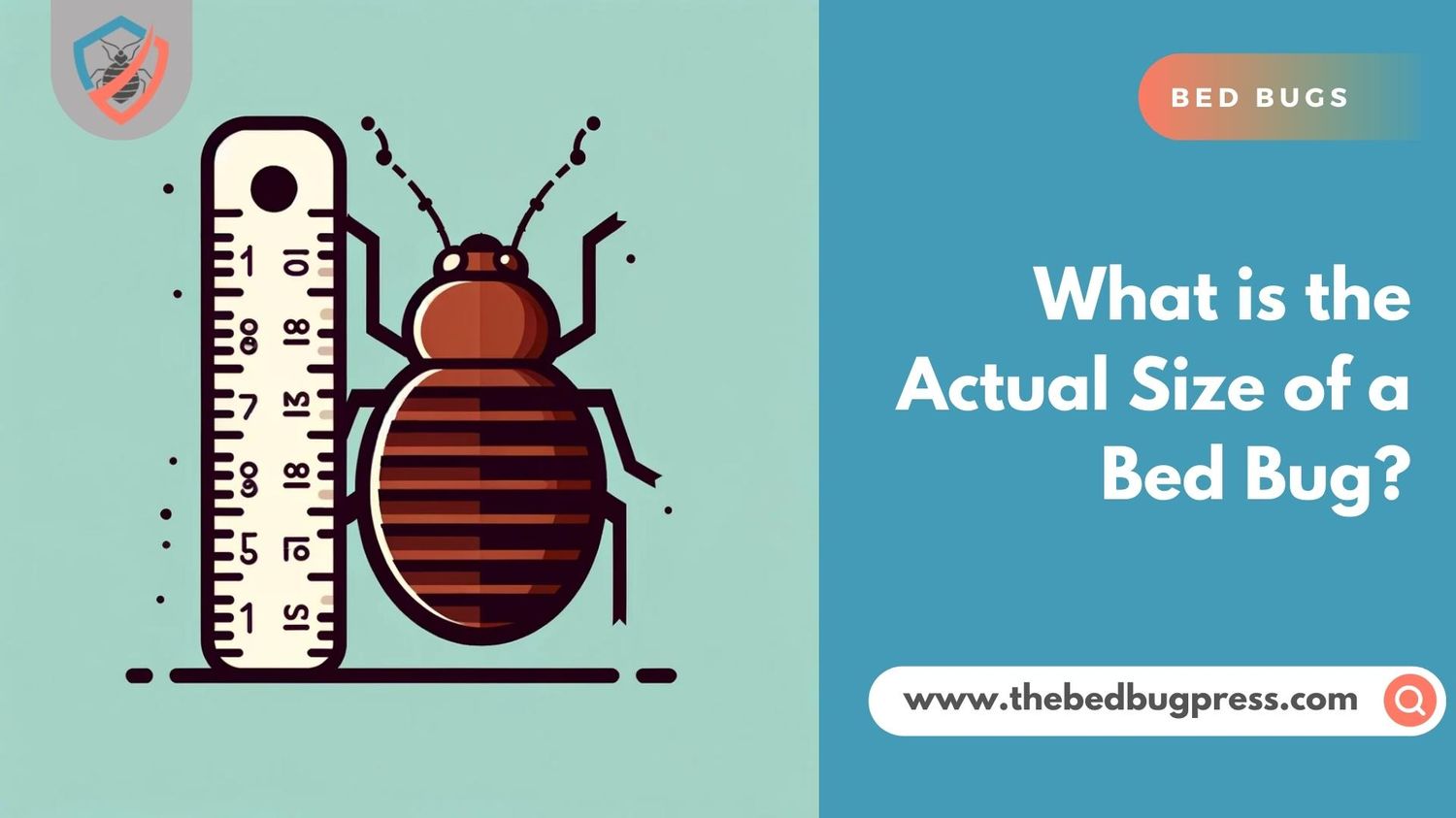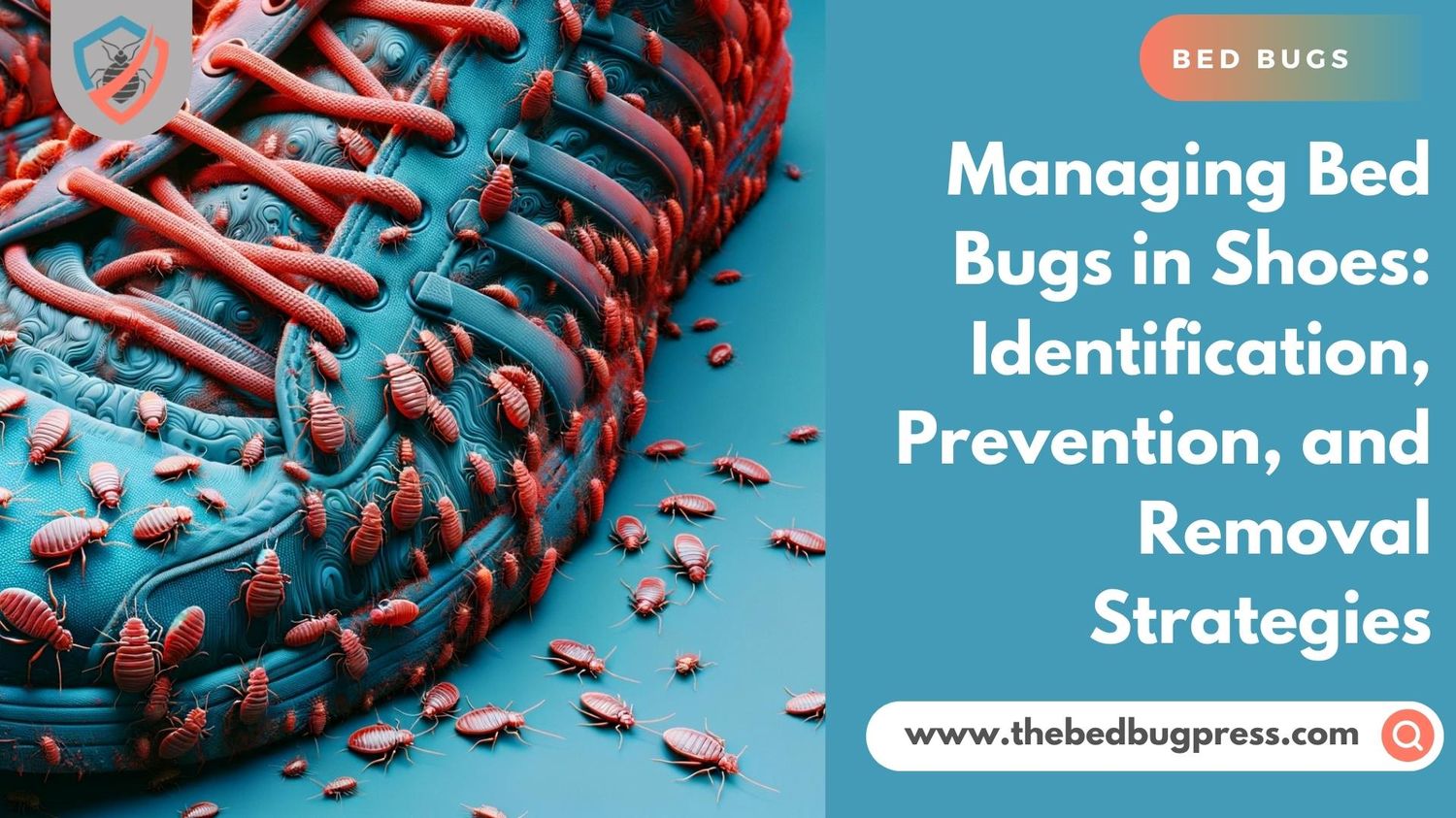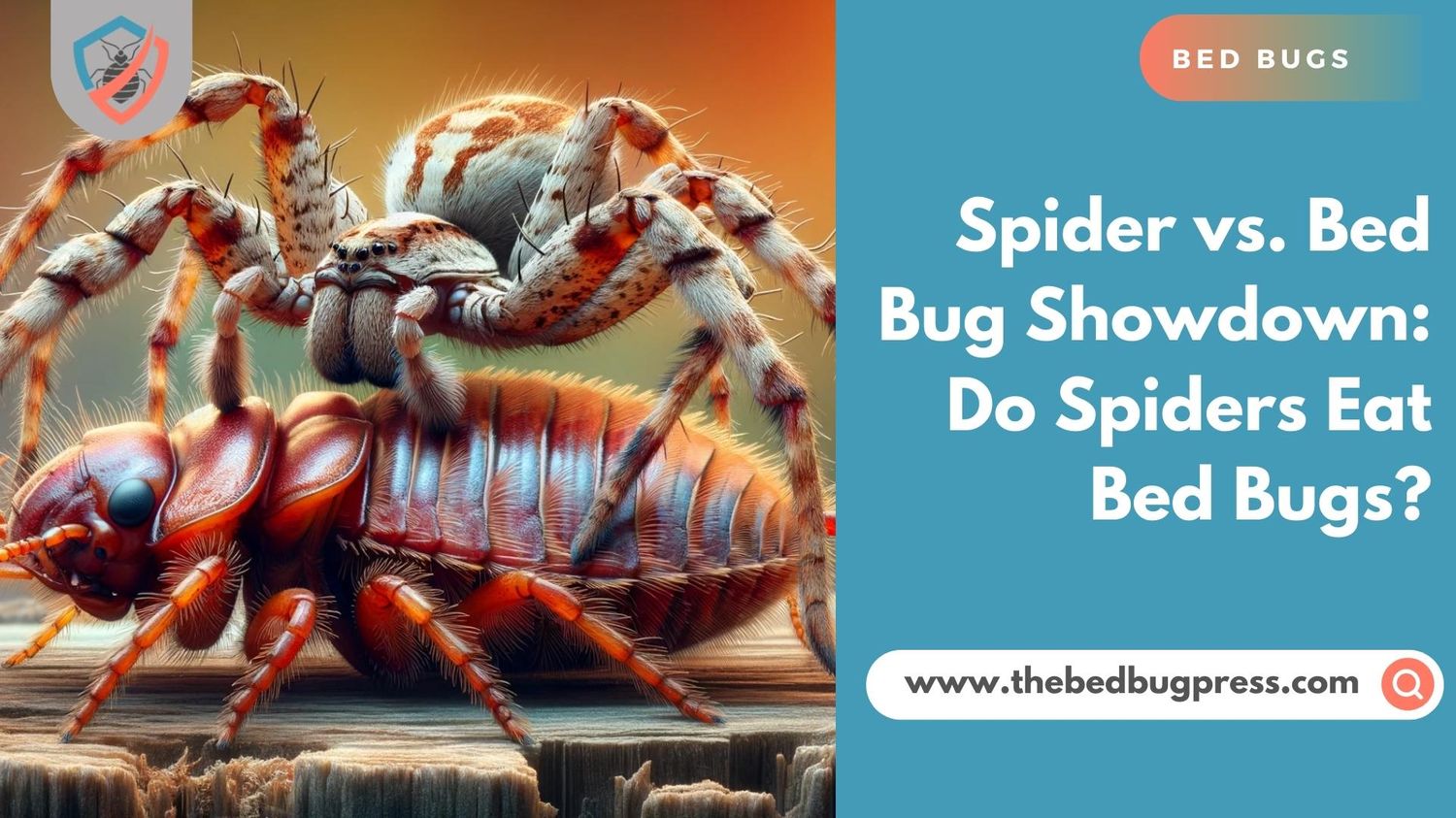Bed bugs rarely venture away from their food source, but they can quickly find their way to your furniture and other areas in your home. Bed bugs usually live for 2 to 4 months. Some bed bugs can live longer and if you do not treat an infestation immediately, bed bugs will continue to multiply.
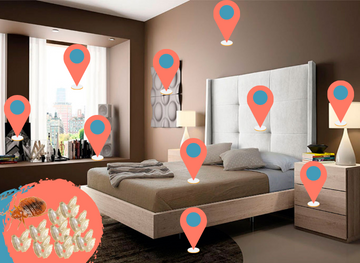
Bed Bug Life Cycle
Bed bugs can live for months without feeding on humans. During their lifetime, they will go through various stages. Here is the life cycle of a bed bug.
Eggs – 1 millimeter
Nymph
1st stage – 1.5 millimeter
2nd stage – 2 millimeters
3rd stage – 2.5 millimeters
4th stage – 3 millimeters
5th stage – 4.5 millimeters
Unfed Adult Bed Bug – 5-7 millimeters
How Often Does a Female Bed Bug Lay Eggs and How Many?
Learning how often female bed bugs lay eggs will give you the advantage of knowing how serious a bed bug infestation can be. You see, this will make you understand how a bed bug infestation can blow up in just a few weeks.
A female bed bug can lay around 200-250 eggs during its lifetime. Since mating causes scarring, female bed bugs that have mated several times within a short time will lay fewer eggs compared to those that have fully recovered. One pregnant female can lay more than 5,000 bed bug eggs within 6 months.
Female bed bugs lay eggs daily, but this does not mean that the bed bugs hatch right away. The eggs usually hatch every 10 days. Some experts say that bed bug eggs hatch between 10 and 12 days. Others say that the eggs hatch within 6 to 10 days at room temperature and in favorable living conditions.
But it does not matter how long or quick the eggs hatch. Once they hatch, you will have a new generation of baby bed bugs invading your home.
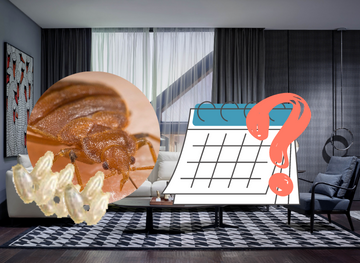
How Long Do Bed Bug Eggs Survive?
Bed bug eggs typically take around 6 to 10 days to hatch, depending on the temperature and humidity levels. The eggs will not hatch if the temperature falls below 50 degrees Fahrenheit or rises above 90 degrees Fahrenheit. Once hatched, the nymphs will go through several molting stages before becoming adults.
In terms of survival, bed bug eggs can survive up to several months without a host, depending on the conditions. In low humidity and cool temperatures, the eggs can survive for several months. However, in warm and humid conditions, the eggs will not survive for more than a few weeks.
Where are Bed Bug Eggs Usually Found?
Bed bug eggs love to hide out in the tight spaces of your bed, bed frame, and nearby furniture, like the seams of your couch or chair. They also like to sneak into hotels, dorms, and other places where people snooze. But watch out, if you find them in your bed, you might have a bed bug infestation going on.
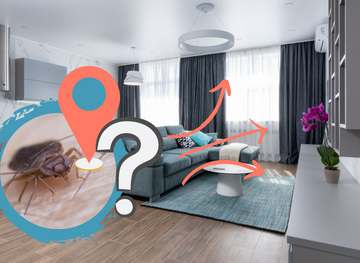
Where Do Bed Bugs Lay Eggs in your Home?
Bed bugs are sneaky little critters and they like to lay their eggs in tight and hard-to-reach hiding places around your home including:
In the cracks and crevices of beds and bed frames
In mattress seams,
In nearby furniture, such as the seams of couches and chairs
In baseboards and behind picture frames
In any other areas where bed bugs congregate
In hotels, dormitories, and other shared living spaces
Anywhere in the house that is close to a food source (human host)
Basically, anywhere in the house where they can hide and be close to a food source they will lay their eggs.
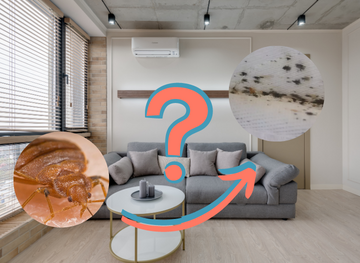
How to Prevent Bed Bug Infestations
Do not try to treat a bed bug infestation on your own. It is best to call a pest control professional to do the job for you. But if you want to get started as soon as possible, here are some tips to help you prevent the spread of bed bugs.
Identify the infested areas
It is cheaper and easier to treat small infestations than big ones. Smaller infestations, however, are more difficult to detect. You can either hire a professional or look for bed bugs on your own. Some pest professionals use trained dogs to search for bed bugs by scent.
Since bed bugs have a small body that allows them to squeeze into tight spaces, you should look for them in the seams of your couch or mattress, in furniture joints, and cracks in the box springs and bed frame as well as between couch cushions.
You should also check under loose wallpaper or paintings on the walls, inside electrical outlets or in baseboards. Use a magnifying glass and flashlight to inspect these areas.
If you see dark spots or reddish stains on the mattress, it is a sign that you have an infestation. Other signs of a bed bug infestation include live bed bugs and yellowish skins, pale yellow eggs, and eggshells. Put the bugs in a sealed jar that contains 1 tsp of rubbing alcohol.
You can also trap bed bugs using your vacuum. Put the vacuumed contents in a plastic bag and throw it outside your home.
Do not forget to clean the vacuum properly. You should also store the infested clothes and linens in a plastic bag. To save you from the worries of spreading the bugs after vacuuming, we recommend the use of bed bug HEPA vacuums.
Wash them on the hottest temperature setting in the dryer and washer. If the items cannot be washed, you should put them in the dryer for half an hour on the highest possible heat setting.
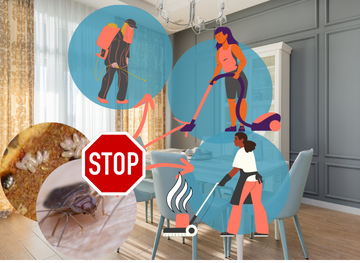
Kill bed bugs
Bed bugs are easy to kill with intense cold (32 degrees Fahrenheit) or high heat (115 degrees Fahrenheit). You can wash your clothes and bedding in hot water for half an hour and then place them in the dryer for half an hour on the highest possible heat setting. Alternatively, you can use portable heating equipment like the ZappBug Heater. We recommend these options in heat-treating your clothes and in heat-treating a small room.
If you want to kill bed bugs with intense cold temperatures, you need to put the infested items in the freezer at 32 degrees Fahrenheit for at least 4 days. Do not forget to seal the infested items in a plastic bag first.
If you didn’t get any results from your effort, it’s time to call in the pros. Pest management experts use various treatment methods to eliminate bed bugs such as insecticides that can kill bed bugs upon contact.

